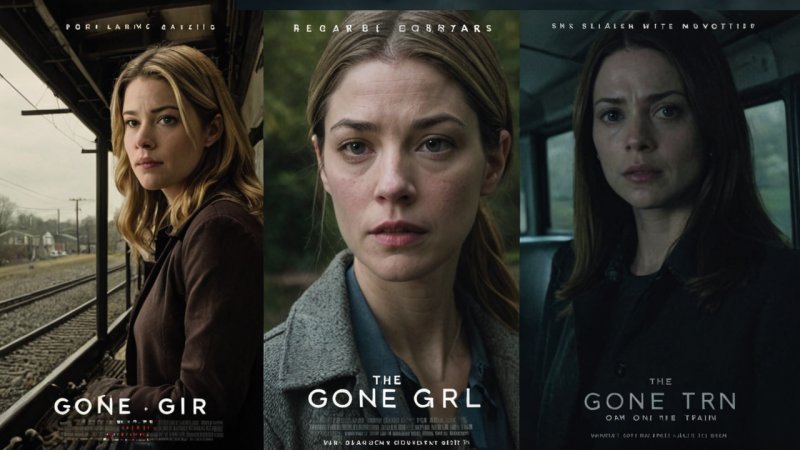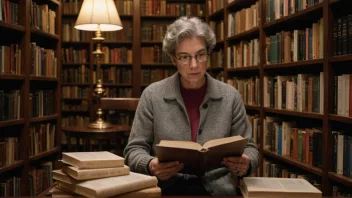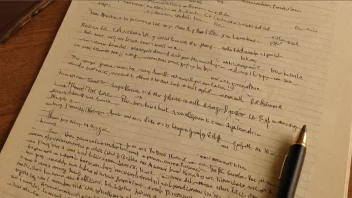In the realm of thriller literature, character relationships are paramount in driving the narrative and keeping readers on the edge of their seats. Two novels that exemplify this are Gillian Flynn's Gone Girl and Paula Hawkins' The Girl on the Train. Both books have captivated audiences with their intricate plots, but it is the relationships between their characters that truly elevate the tension and suspense. This article will delve into a comparative analysis of these two psychological thrillers, focusing on the dynamics of the main characters, the impact of these relationships on the plot, and the overall themes they convey.
Character Dynamics
At the heart of both Gone Girl and The Girl on the Train are complex relationships that reveal the darker sides of human nature. In Gone Girl, the relationship between Nick and Amy Dunne serves as the central axis of the narrative. Their marriage is portrayed as a façade, with deep-seated resentments bubbling just beneath the surface. This dichotomy of love and hatred creates a volatile atmosphere that is essential for the thrill of the story.
Conversely, The Girl on the Train features Rachel, a woman entangled in the lives of others due to her daily train commute. The relationships she forms with Megan and Anna are pivotal, showcasing themes of obsession and betrayal. Unlike Nick and Amy, the relationships in The Girl on the Train revolve around external perception and the impact of personal trauma on social connections.
Impact on Plot Development
The character relationships in these novels not only define the characters but also propel the plot forward in significant ways. In Gone Girl, the manipulation of the media and public perception surrounding Nick and Amy's marriage creates a sense of urgency and intrigue. The dual perspectives of Nick and Amy provide insights into their twisted relationship, leading to shocking plot twists that keep readers guessing.
In contrast, The Girl on the Train uses Rachel's unreliable narration to create suspense. Her fixation on Megan's life leads to a series of misunderstandings that escalate into a murder mystery. The way Rachel's relationships with Megan and Anna develop serves as catalysts for the narrative, driving Rachel's transformation from a passive observer to an active participant in the unfolding drama.
Thematic Exploration
Character relationships in these thrillers are not just devices for plot advancement; they also explore profound themes of trust, betrayal, and the complexity of love. Gone Girl delves into the idea of the 'perfect marriage' and the facades that people maintain in their relationships. The exploration of manipulation and deception raises questions about identity and the extent to which individuals will go to protect their image.
On the other hand, The Girl on the Train addresses themes of loneliness and the human desire for connection. Rachel's interactions with Megan and Anna highlight the fragility of relationships and the devastating consequences of miscommunication. The psychological strain experienced by Rachel offers a poignant commentary on how trauma can distort perceptions and relationships.
Pros and Cons of Each Novel
Gone Girl
- Pros: Intricate plot, masterful character development, and an exploration of societal expectations in marriage.
- Cons: Some readers may find the characters unsympathetic or morally ambiguous, leading to a disconnect.
The Girl on the Train
- Pros: Engaging narrative style, relatable themes of addiction and loss, and a strong female protagonist.
- Cons: Some may find the pacing slow at times or feel that the ending is less satisfying compared to Gone Girl.
Reader Engagement and Reception
Both novels have achieved critical and commercial success, resonating with readers around the world. Gone Girl became a cultural phenomenon, sparking discussions about marriage and media representation. Its adaptation into a major motion picture further solidified its impact on popular culture.
The Girl on the Train, while also receiving acclaim, tapped into the psychological thriller niche and became a bestseller, appealing to readers interested in character-driven narratives. Its film adaptation created a buzz, although opinions on its execution varied.
Conclusion
In comparing Gone Girl and The Girl on the Train, it is evident that the significance of character relationships plays a crucial role in shaping the narratives of both thrillers. While Gone Girl offers a dark exploration of marriage and deception, The Girl on the Train presents a poignant reflection on the complexities of human connections. Ultimately, readers seeking psychological depth and suspense will find both novels rewarding, each providing a unique lens through which to understand the intricacies of relationships in the context of thrilling narratives.






